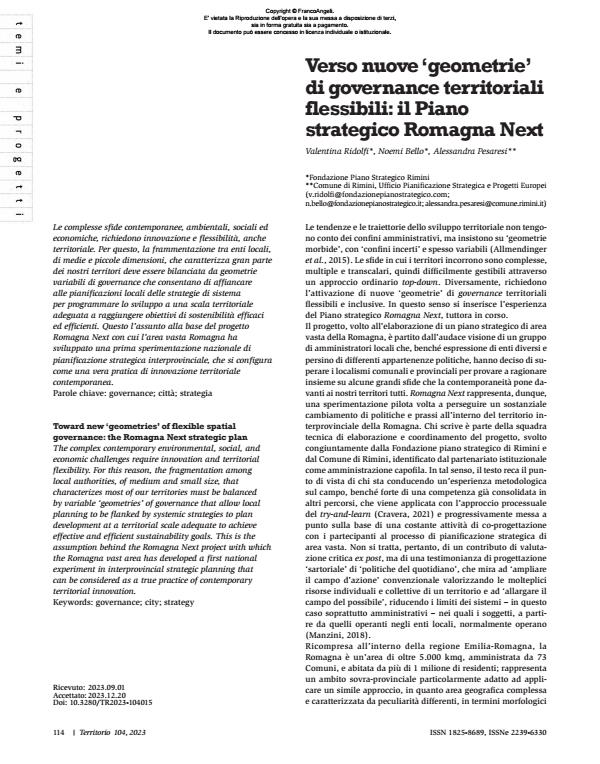Toward new ‘geometries’ of flexible spatial governance: the Romagna Next strategic plan
Journal title TERRITORIO
Author/s Valentina Ridolfi, Noemi Bello, Alessandra Pesaresi
Publishing Year 2024 Issue 2023/104
Language Italian Pages 6 P. 114-119 File size 137 KB
DOI 10.3280/TR2023-104015
DOI is like a bar code for intellectual property: to have more infomation
click here
Below, you can see the article first page
If you want to buy this article in PDF format, you can do it, following the instructions to buy download credits

FrancoAngeli is member of Publishers International Linking Association, Inc (PILA), a not-for-profit association which run the CrossRef service enabling links to and from online scholarly content.
The complex contemporary environmental, social, and economic challenges require innovation and territorial flexibility. For this reason, the fragmentation among local authorities, of medium and small size, that characterizes most of our territories must be balanced by variable ‘geometries’ of governance that allow local planning to be flanked by systemic strategies to plan development at a territorial scale adequate to achieve effective and efficient sustainability goals. This is the assumption behind the Romagna Next project with which the Romagna vast area has developed a first national experiment in interprovincial strategic planning that can be considered as a true practice of contemporary territorial innovation.
Keywords: governance; city; strategy
Valentina Ridolfi, Noemi Bello, Alessandra Pesaresi, Verso nuove ‘geometrie’ di governance territoriali flessibili: il Piano strategico Romagna Next in "TERRITORIO" 104/2023, pp 114-119, DOI: 10.3280/TR2023-104015